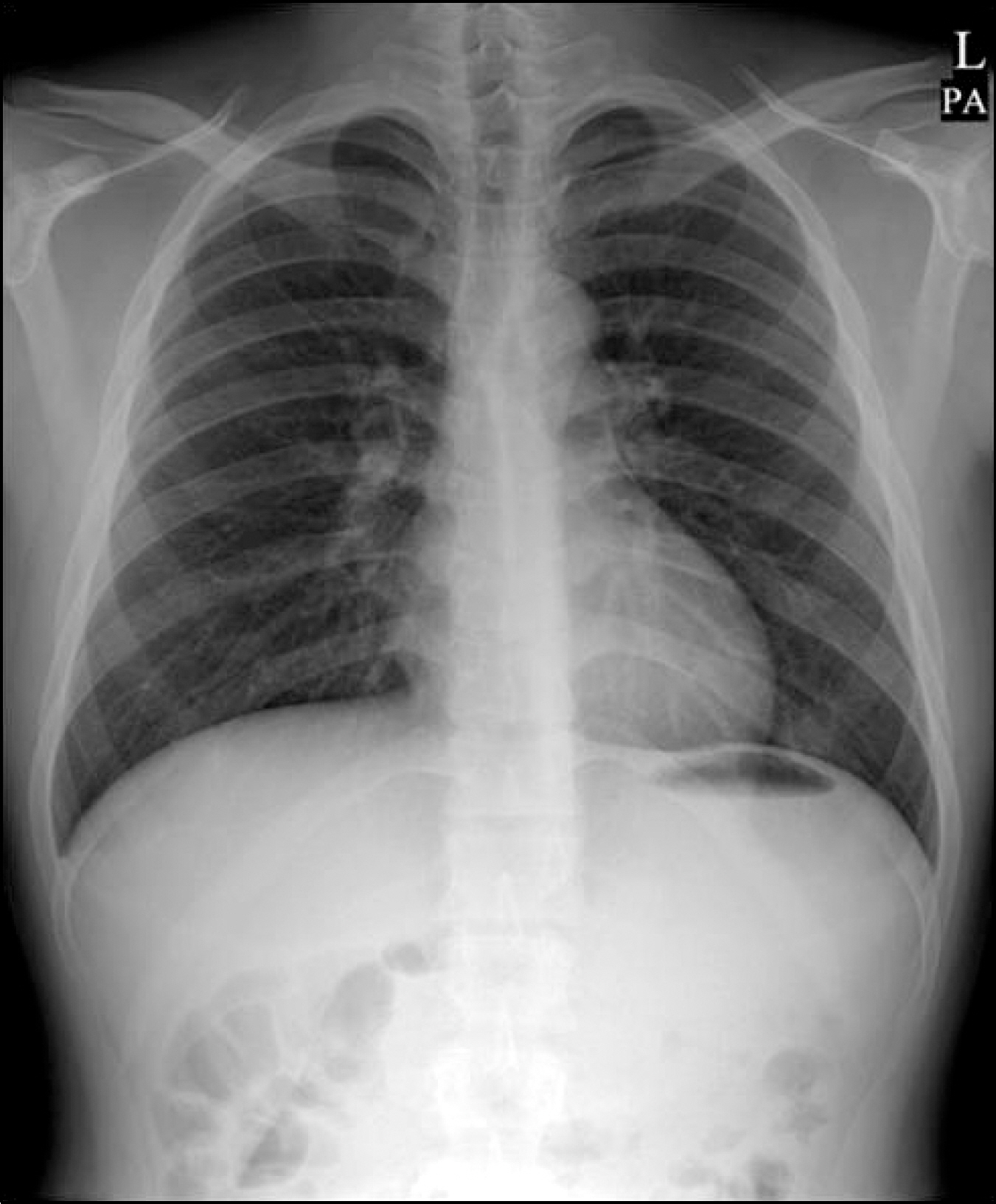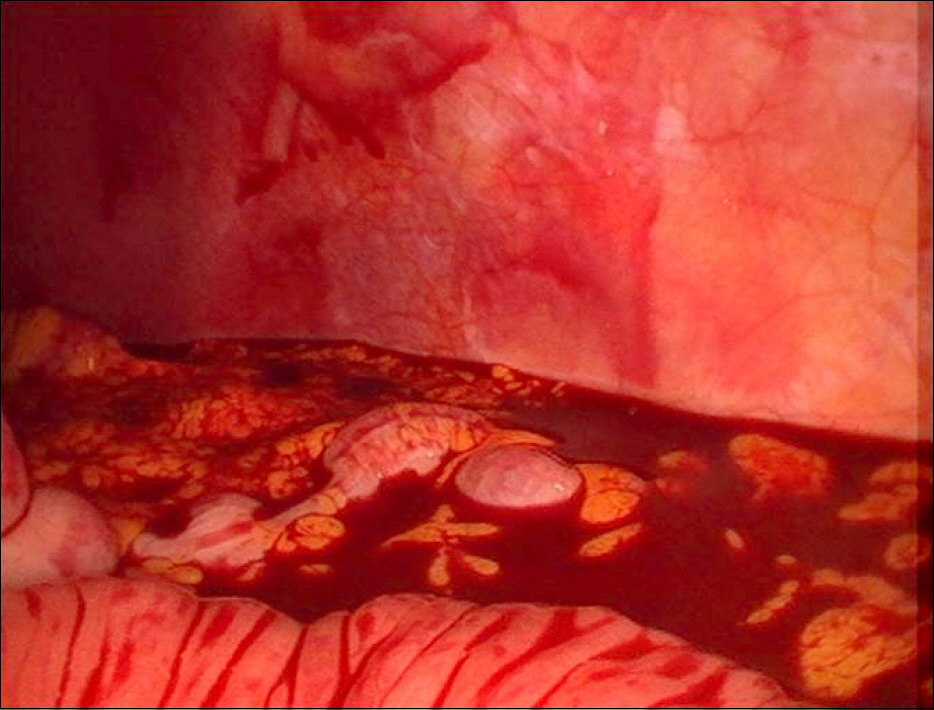Korean J Gastroenterol.
2014 May;63(5):313-315. 10.4166/kjg.2014.63.5.313.
Mesocolon Laceration Following Colonoscopy
- Affiliations
-
- 1Department of Internal Medicine, Inha University School of Medicine, Incheon, Korea. bangbyoung@naver.com
- KMID: 2155330
- DOI: http://doi.org/10.4166/kjg.2014.63.5.313
Abstract
- Colonoscopic examination is a safe procedure, however, unexpected complications can sometimes occur. Bleeding and perforation of the colon have been reported as the most common complications. Hemoperitoneum after colonoscopy is an unusual complication, but it may be catastrophic. We report on a 20-year-old man who experienced left low quadrant pain after undergoing colonoscopy. Hemoperitoneum was diagnosed using abdominal CT. A laparoscopic exploration was urgently performed, revealing a lacerated mesocolon of the descending colon. Bleeding of the injured site was controlled without complication. The patient recovered fully without signs of recurrent bleeding. This report implies that if the patient has persistent abdominal pain after undergoing colonoscopy, we should consider hemoperitoneum as one of the causes. To the best of our knowledge, no case of isolated laceration of the mesocolon of the descending colon after colonoscopy has been reported.
Keyword
MeSH Terms
Figure
Reference
-
References
1. Oh JE, Shim SG. Colonoscopic perforation; a 10-year experience in single general hospital. Korean J Gastroenterol. 2009; 54:371–376.
Article2. Schwesinger WH, Levine BA, Ramos R. Complications in colonoscopy. Surg Gynecol Obstet. 1979; 148:270–281.3. Wexner SD, Garbus JE, Singh JJ. SAGES Colonoscopy Study Outcomes Group. A prospective analysis of 13,580 colonoscopies. Reevaluation of credentialing guidelines. Surg Endosc. 2001; 15:251–261.4. Doctor NM, Monteleone F, Zarmakoupis C, Khalife M. Splenic injury as a complication of colonoscopy and polypectomy. Report of a case and review of the literature. Dis Colon Rectum. 1987; 30:967–968.5. Sorrentino M, Terrosu G, Risaliti A, et al. Hemoperitoneum caused by lesions to the appendix epiploica. An unusual complication of colonoscopy. Minerva Chir. 1996; 51:835–837.6. Salvador Milian E, Lorente Perez S, Arroyo Villarino MT, Sainz Samitier R. Hemoperitoneum as a complication of diagnostic colonoscopy. Gastroenterol Hepatol. 1999; 22:377.7. Gonzàlez-Rodriguez JF, Tarquis-Alonso P, Castano-Pascual A, Gonzàlez-Lera S. Hemoperitoneum due to necrosis of a small intestinal leiomyosarcoma following colonoscopy. Endoscopy. 1993; 25:253–254.
Article8. Levine E, Wetzel LH. Splenic trauma during colonoscopy. AJR Am J Roentgenol. 1987; 149:939–940.
Article9. Dominitz JA, Eisen GM, Baron TH, et al. Complications of colonoscopy. Gastrointest Endosc. 2003; 57:441–445.10. Hernandez EJ, Ellington RT, Harford WV. Isolated transverse mesocolon laceration during routine colonoscopy. J Clin Gastroenterol. 1999; 28:46–48.
Article11. Federle MP, Goldberg HI, Kaiser JA, Moss AA, Jeffrey RB Jr, Mall JC. Evaluation of abdominal trauma by computed tomography. Radiology. 1981; 138:637–644.
Article
- Full Text Links
- Actions
-
Cited
- CITED
-
- Close
- Share
- Similar articles
-
- A lipoma with a calcified and ossified wall at mesocolon: a case report
- A Case of Pseudocyst Originated from Ectopic Pancreas of Transverse Mesocolon Associated with Colonic Duplication
- Castleman's Disease in the Sigmoid Mesocolon: A Case Report
- Primary Multiple Mesenteric Liposarcoma of the Transverse Mesocolon
- Giant Mesenteric Lipoma: a Case Report




